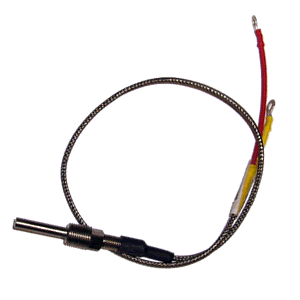Why we need to measure oil temperature in aircraft engines?
Oil Temp Probe In Aircraft And Its Advantages
Be it a car, truck, bike or a plane, most of us are just content in flying it or driving it.
Not many have so much as seen the engine under the hood or even know what it looks like. And then, there are others who need to not only see but need to feel, to know what each part does and its importance in the entire machine.
<script async src="https://pagead2.googlesyndication.com/pagead/js/adsbygoogle.js"></script>
<ins class="adsbygoogle"
style="display:block; text-align:center;"
data-ad-layout="in-article"
data-ad-format="fluid"
data-ad-client="ca-pub-3594006331358944"
data-ad-slot="7745808678"></ins>
<script>
(adsbygoogle = window.adsbygoogle || []).push({});
</script>
Today, let us consider the Oil Temp Probes in aircraft – their importance and advantage.
Just as the temperature of the human body is indicative of the health status of that body, so too in any aircraft, there are several locations that require the heat to be carefully regulated.
Some of these locations include carburettor (for testing temperature of the fuel mixture), engine oil temperature - over-heated engine oil could burst into flames or oil at low temperature will turn sluggish. Then there is the inlet air temperature (as it effects combustion), free air temperature, engine cylinder head temperature, heater ducts, and exhaust gas temperature of turbine engines etc.
The tip of the temperature probes is an amalgamation of two different metals that react in a precise measurable manner to temperature changes. These temperature probes are called thermocouple probes. Due to consistency of their reaction to heat, these types of probes are ideal for use in aircraft and other machines where precision is a must.
An aircraft engine requires a high level of precision and therefore, the quality of inputs including oil, matters a lot to the performance of the Aircraft Flow Sensors.
The temperature of the oil effects it’s viscosity and therefore flow rate and usefulness in lubricating the engine.
An oil temperature sensor is therefore vital to know the state of the oil in oil tank. The modern oil temp sensor or probe, is connected via wires to the EDM or oil temperature indicator. If the cockpit sports a modern EDM, the pilot can probably set an alarm for low/high oil temperature.
It is advisable that the oil temp probe be regularly tested for accuracy. This can be done by an expert mechanic who will spot gauge calibration errors and rectify the same or replace the oil temp probe.
Once the periodic testing is completed, it is best if the gauge, sensor, and interconnect wiring be calibrated before flight.


Comments
Post a Comment